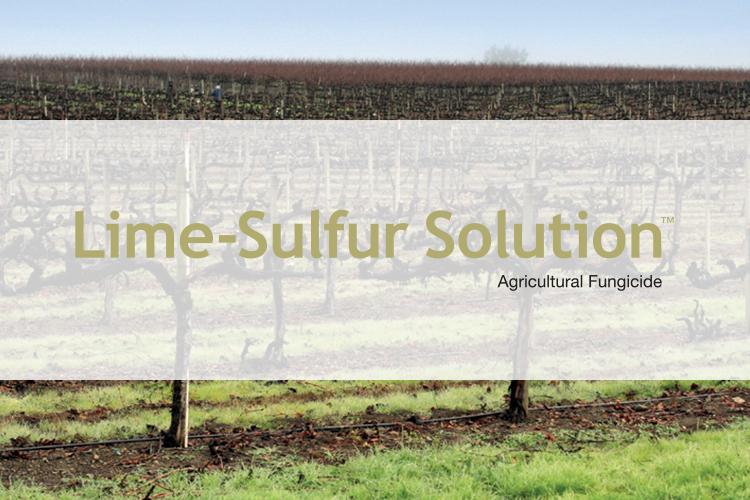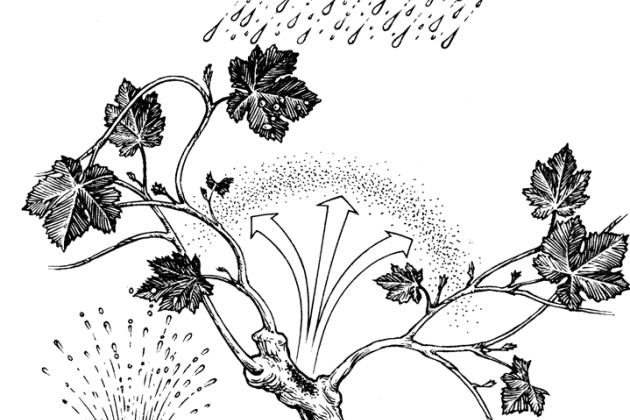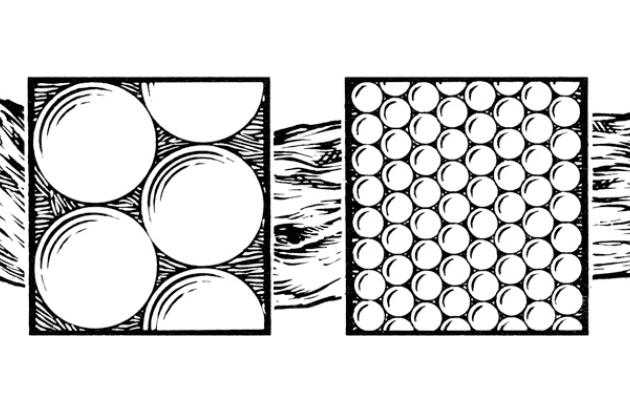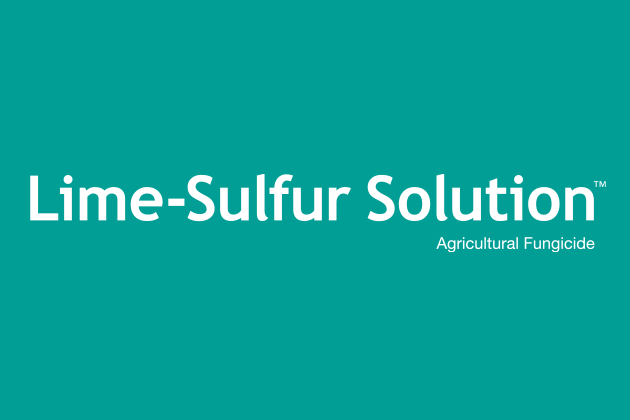Use Dormant Sprays to Knock Down Powdery Mildew Inoculum

IPM: Integrated Pest Management — Today’s Solution to Powdery Mildew
Control of powdery mildew in vineyards is difficult and limited by many factors, including:
- Grapes in the western United States are grown under climatic conditions conducive to powdery mildew infection.
- Vitus vinifera is highly susceptible to powdery mildew.
- Powdery mildew inoculum from previous infections is generally present in vineyards.
- Powdery mildew is resistant to strobilurin (QoI) and sterol biosynthesis inhibitor (DMI) fungicides, thus limiting the number of effective fungicides available to growers.
Growers, fieldmen, and researchers are aware that the only effective way to combat the disease is from many different approaches. The combination of chemical, biological, cultural and agronomic approaches is known as Integrated Pest Management or IPM. Growers who follow IPM monitor infection conditions and generally use predictive models to determine powdery mildew development. Control practices include:
- Start fungicide applications early to reduce the population of powdery mildew inoculum and delay the disease onset.
- Use an integrated control program that rotates different pesticide modes of action.
- Use DMI or QoI fungicides as preventive measures only, never as eradicants.
- Adopt sound canopy management practices, such as leaf removal to open up the fruiting area for better air movement and coverage by fungicides.
Whatever the approach, the key word in powdery mildew control is “prevention.” Prevention now includes the use of dormant applications to kill chasmothecia (formerly
cleistothecium) an overwintering source of powdery mildew inoculum.
Dormant application of Lime-Sulfur Solution™ allows growers to:
- Reduce the overwintering supply of inoculum.
- Begin the season with potentially less powdery mildew pressure.
- Maximize the effectiveness of in-season fungicide applications, because powdery mildew pressures are reduced.
Chasmothecium: The new target in powdery mildew control
Doug Gubler, Ph.D., UC-Davis
If you grow Vitus vinifera grapes, you know powdery mildew is the primary grape disease problem. Doug, Gubler, Ph.D., has identified methods to control the disease that continues to cause economic losses. Gubler is an extension plant pathologist at University of California (UC) at Davis.
Current practices to control powdery mildew are focused on the growing season. But research by Gubler focused on the overwintering stages of the disease. It was found that control during the dormant stage gives growers an upper hand at the beginning of the season.
According to Gubler, there are two overwintering sources of powdery mildew inoculum. The most insidious, he says, is the mycelia form that survives through the winter months in dormant buds. “We don’t have anything to control it with and we know very little about why it works the way it does,” Gubler says. Research continues.
The Chasmothecium is the other over-wintering form found on bark of cordons, branches and stems. “Chasmothecia are the tiny black fruiting bodies (about 3 or 4 millimeters in size) of the powdery mildew pathogen,” Gubler says. “They are primarily on the leaves but can also be found on rachis and other green portions of the plant. You can see them using a hand lens. It looks like salt and pepper on the leaves.”
“Chasmothecia are borne in the late summer and fall when the days become cooler and the nights become longer. Then, later on in the fall when rainfall occurs, they are washed off the leaves onto the bark.
The Chasmothecia overwinter on the cordon and canes, down in the bark cracks and crevices. They reside there until the following spring.”
Gulbler says the chasmothecium has a hard outer shell that encases spores (called ascospores) inside. Moisture in the spring from rain, long duration fog or heavy dew swells the shell of the chasmothecium forcing it to rupture. “The spores inside are actually ejected to a height of about 24 millimeters,” he says. “They are picked up by wind gusts and water droplets. When they contact new growth, the disease is initiated in about 12 hours. You will see the symptoms seven-to-10 days later.”
“Because the disease hits quickly, you need to have a product in place before the disease occurs,” Gubler says. “The argument for making dormant applications is to delay the onset of disease in the spring or reduce the overall amount of disease when it does hit. Theoretically you will have better control during the season. It is a disease control strategy that considers the overall inoculum pressure and delays the disease onset.”
When making dormant applications of LIME-SULFUR SOLUTION, Gubler stresses the importance of targeting the chasmothecia. “Wet the cordons and the upper trunk area very well. That is where chasmothecia reside. By spraying heavily into those areas, you can kill a lot of the ascospores in chasmothecia. Make sure the spray volume is high enough to get good wetting,” he says.
-

New tissue - Sprinkler irrigation
When chasmothecia are allowed to overwinter, spring rains and irrigation prompt the release of ascospores. The ascospores then infect new tissue.
-

Micronizedsulfur (left) vs. LIME-SULFUR SOLUTION (right)
With its small particle size, LIME-SULFUR SOLUTION disperses more evenly and sticks more tenaciously so you get residual control and extended protection.
LIME-SULFUR SOLUTION Answers the Need for Grapevine Powdery Mildew IPM.
Mode Of Action: LIME-SULFUR SOLUTION works on contact. It is highly alkaline, so when it contacts a Chasmothecium, LIME-SULFUR SOLUTION can penetrate the Chasmothecium’s outer shell. The ascospores inside are destroyed before they can germinate and infect new tissue.
Particle Size: A Fine Distinction: The particle size of the colloidal sulfur in LIME-SULFUR SOLUTION is so fine (0.0002 microns) that it is 20 times smaller than micronized sulfurs. The small particle size allows LIME-SULFUR SOLUTION to more evenly cover targeted surfaces.
Rainfastness: LIME-SULFUR SOLUTION penetrates and sticks to plant surfaces. Once it dries, rainfall and other moisture will not wash it off. Because it is available on the bark for a long period, it provides a residual effect and extends your protection against powdery mildew.
Timing: A dormant application of LIME-SULFUR SOLUTION is a first-step approach to a solid preventative powdery mildew program. Because LIME-SULFUR SOLUTION is not temperature driven, it can be applied any time during the dormant stage. It is important to time applications well before spring rains or periods when unseasonably warm weather may trigger bud break. Do not apply after bud break when leaf expansion is occurring or damage will likely occur.
Rates: Dormant application of LIME-SULFUR SOLUTION should be made at a rate of 4 to 10 gallons per acre in sufficient water to gain good coverage. Vary rates according to the previous year’s degree of powdery mildew infection.
Closed System Requirement: In certain states, LIMESULFUR SOLUTION is labeled for use through a closed system only. If you have questions about the use of a closed system, call your local distributor/dealer or local application/equipment company.
Cleanup Pointers: Always, triple rinse the sprayer and any other equipment at the end of the spray day.
Don’t let the product settle in the tank or sit overnight.
Tips for Gaining Maximum Benefit from LIME-SULFUR SOLUTION
- Time your applications well before bud break. Don’t get caught off guard.
- Determine the rate of LIME-SULFUR SOLUTION based on the potential inoculum level found in your vines:
Last season + heavy pressure = highest rates
Last season + low pressure = lowest rates - Aim your spray solution toward the vines, arms, cordons & trunks.
- Coverage is essential, so use a dilute spray for the best job possible.
- Triple rinse sprayers and equipment.


